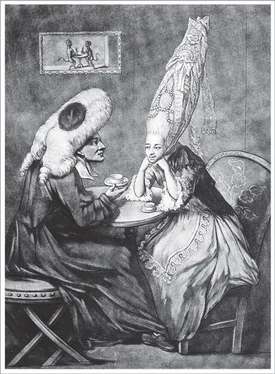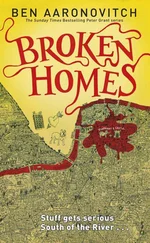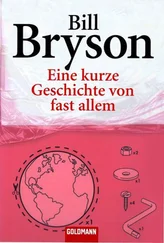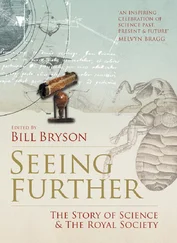Bill Bryson - At Home
Здесь есть возможность читать онлайн «Bill Bryson - At Home» весь текст электронной книги совершенно бесплатно (целиком полную версию без сокращений). В некоторых случаях можно слушать аудио, скачать через торрент в формате fb2 и присутствует краткое содержание. Жанр: Старинная литература, на английском языке. Описание произведения, (предисловие) а так же отзывы посетителей доступны на портале библиотеки ЛибКат.
- Название:At Home
- Автор:
- Жанр:
- Год:неизвестен
- ISBN:нет данных
- Рейтинг книги:4 / 5. Голосов: 1
-
Избранное:Добавить в избранное
- Отзывы:
-
Ваша оценка:
- 80
- 1
- 2
- 3
- 4
- 5
At Home: краткое содержание, описание и аннотация
Предлагаем к чтению аннотацию, описание, краткое содержание или предисловие (зависит от того, что написал сам автор книги «At Home»). Если вы не нашли необходимую информацию о книге — напишите в комментариях, мы постараемся отыскать её.
At Home — читать онлайн бесплатно полную книгу (весь текст) целиком
Ниже представлен текст книги, разбитый по страницам. Система сохранения места последней прочитанной страницы, позволяет с удобством читать онлайн бесплатно книгу «At Home», без необходимости каждый раз заново искать на чём Вы остановились. Поставьте закладку, и сможете в любой момент перейти на страницу, на которой закончили чтение.
Интервал:
Закладка:
What made Ötzi uniquely exciting was that this was not a burial, with personal possessions thoughtfully arranged about him, but a person found straight from life, with the day-to-day items he had on him when he died. Nothing like that had ever been found before, and it was almost wholly undone by four days of overexuberant recovery efforts. Passersby and sightseers were allowed to take turns hacking away at the ice that held the body. One well-meaning helper seized a stick and tried digging with it, but it snapped in two. “The stick,” the National Geographic reported, “turned out to be part of the hazel-wood and larch-wood frame of the Iceman’s backpack.” The volunteers, in short, were trying to dig out the corpse using his own priceless artifacts.
The case was dealt with by Austrian police, and the body, once freed, was whisked away to a refrigerator in Innsbruck. But a subsequent GPS investigation showed that in fact Ötzi had been just inside Italian territory when found, and after some legal wrangling the Austrians were ordered to surrender their treasured body, and Ötzi was driven over the Brenner Pass to Italy.
Today Ötzi lies on a slab in a refrigerated room in the archaeological museum in Bolzano, a German-speaking city in the north of Italy. His skin, the color and texture of fine leather, is stretched tight across his bones. His face wears an expression that looks very like weary resignation. Since being hauled off the mountain nearly twenty years ago, Ötzi has become the most forensically studied human being in history. Scientists could determine many of the details of his life with startling precision. With electron microscopes they could see that on the day of his death he consumed ibex and deer meat, bread made from a type of wheat called spelt, and some unidentified vegetables. From pollen grains recovered from his colon and lungs they were able to deduce that he had died in the spring and had begun the day in the valley below. By studying isotopic trace elements in his teeth, they could even work out what he had eaten as a child and therefore where he had been raised, and concluded that he had grown up in the Eisack Valley, in what is now Italy, then moved to a valley called the Vinschgau farther west near the modern border with Switzerland. The biggest surprise of all was how old he was: at least forty but possibly as much as fifty-three, making him exceedingly old for the period. But there was also much they couldn’t explain, including how he had died, and what he was doing nearly two miles above sea level at the time of his death. His bow was unstrung and only half made, and the arrows mostly had no flights, and so were useless, yet for some reason he took them with him.
Normally not many people stop at small archaeological museums in out-of-the-way provincial towns, but Bolzano’s museum is thronged with visitors throughout the year and the gift shop does a brisk trade in Ötzi keepsakes. Visitors line up to peer at him through a small window. He lies naked on his back on a glass slab. His brown skin glistens from the mist that is perpetually sprayed over him as a preservative. In fact, there is nothing innately distinctive about Ötzi. He is a completely normal, if unusually old and well-preserved, human being. What is extraordinary are his many possessions. They are the material equivalent of time travel.
In addition to the ax, knife, quiver, and arrows, Ötzi had shoes, clothing, two birchbark canisters, a sheath, a bowstave, miscellaneous small tools, some berries, a piece of ibex meat, and two spherical lumps of birch fungus, each about the size of a large walnut and carefully threaded with sinew. One of the canisters had contained glowing embers wrapped in maple leaves, for starting fires. Such an assemblage of personal effects was unique. Some of the items were, as it were, really unique in that they had never been imagined, much less seen. The birch fungus was a particular mystery because it was obviously treasured, and yet birch fungus is not known to be good for anything.
His equipment employed eighteen different types of wood—a remarkable variety. The most surprising of all his tools was the ax. It was copper-bladed and of a type known as a Remedello ax, after a site in Italy where such implements were first found. But Ötzi’s ax was hundreds of years older than the oldest Remedello ax. “It was,” in the words of one observer, “as if the tomb of a medieval warrior had yielded a modern rifle.” The ax changed the time frame for the Copper Age in Europe by no less than a thousand years.
But the real revelation and excitement were the clothes. Before Ötzi we had no idea—or, to be more precise, nothing but ideas—of how Stone Age people dressed. Such materials as survived existed only as fragments. Here was a complete outfit, and it was full of surprises. His clothes were made from the skins and furs of an impressive range of animals—red deer, bear, chamois, goat, and cattle. He also had with him a woven grass rectangle that was three feet long. This might have been a kind of rain cape, but it might equally have been a sleeping mat. Again, nothing like it had ever been seen or imagined.
Ötzi wore fur leggings held up with leather strips attached to a waist strap that made them look uncannily—almost comically—like the kind of nylon hose and garter sets that Hollywood pinups wore during the Second World War. Nobody had remotely foreseen such a getup. He wore a loincloth of goatskin and a hat made from the fur of a brown bear—probably a kind of hunting trophy. It would have been very warm and covetably stylish. The rest of his outfit was mostly made from the skin and fur of red deer. Hardly any came from domesticated animals, the opposite of what was expected.
The boots were the greatest surprise of all. They looked like nothing so much as a pair of bird’s nests sitting on soles of stiffened bear skin, and seemed hopelessly ill-designed and insubstantial. Intrigued, a Czech foot and shoe expert named Vaclav Patek carefully fashioned a replica pair, using exactly the same design and materials, then tried them on a mountain walk. They were, he reported in some astonishment, “more comfortable and capable” than any modern boots he had ever worn. Their grip on slippery rock was better than modern rubber, and it was all but impossible to get blisters in them. They were, above all, exceedingly effective against cold.
Despite all the forensic probings, ten years passed before anyone noticed that embedded in Ötzi’s left shoulder was an arrowhead. Closer inspection showed also that his clothes and weapons were speckled with the blood of four other people. Ötzi, it turned out, had been killed in a violent showdown of some kind. Why his murderers chased him up to a high mountain pass is a question that is not easily answered, even speculatively. Even more mysterious is why the murderers didn’t help themselves to his possessions. Ötzi’s personal items, particularly his ax, had real value. Yet having evidently stalked him for quite a distance and engaged in a remarkably bloody fight at close quarters—clearly it takes a lot of lashing out to draw the blood of four people—they left him where he fell, with his possessions undisturbed. It is of course lucky for us that they did, for his personal effects provide answers to all kinds of otherwise unanswerable questions, except the one that seems bound to tantalize forever now—namely, what on Earth was going on up there?
We are in the dressing room—or what at least was called the dressing room on Edward Tull’s original plans. One of Tull’s many architectural curiosities was that he didn’t provide direct access between the dressing room and Mr. Marsham’s bedroom next door but had both decanting separately into the upstairs passage. So in order to dress or undress, Mr. Marsham would have had to leave his bedroom and walk a few steps along the corridor to the dressing room—rather an odd way to go about things, bearing in mind that just across the way was the “Female Servant’s Bedroom” (now the bathroom)—which is to say, that of the loyal spinster Miss Worm. Such an arrangement would almost certainly have guaranteed occasional encounters, which we may presume would tend to be awkward. But then again perhaps not. A separate oddity is how cozily proximate their bedrooms were, considering how rigorously their domains were separated by day. It is certainly a hard household to figure.
Читать дальшеИнтервал:
Закладка:
Похожие книги на «At Home»
Представляем Вашему вниманию похожие книги на «At Home» списком для выбора. Мы отобрали схожую по названию и смыслу литературу в надежде предоставить читателям больше вариантов отыскать новые, интересные, ещё непрочитанные произведения.
Обсуждение, отзывы о книге «At Home» и просто собственные мнения читателей. Оставьте ваши комментарии, напишите, что Вы думаете о произведении, его смысле или главных героях. Укажите что конкретно понравилось, а что нет, и почему Вы так считаете.












